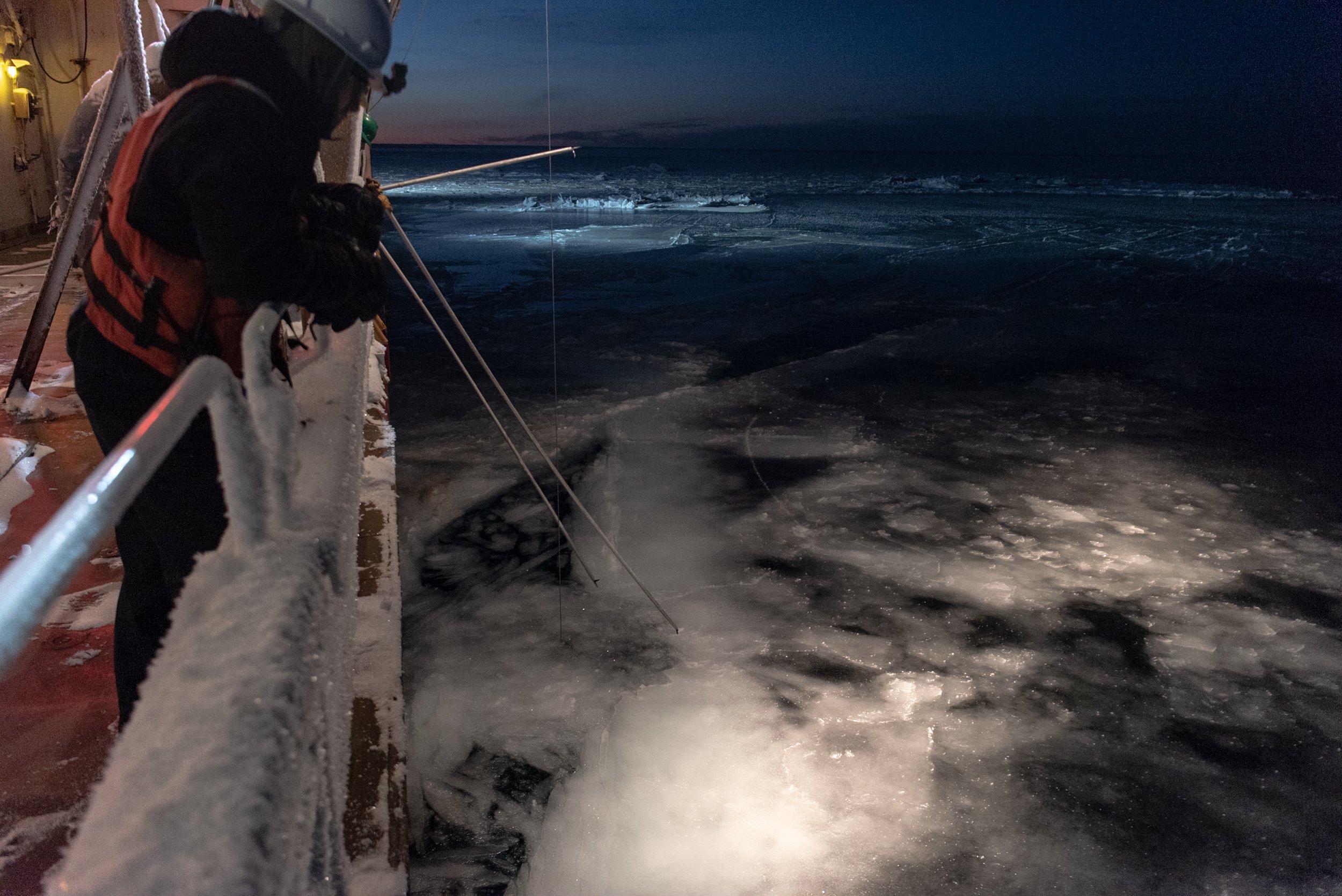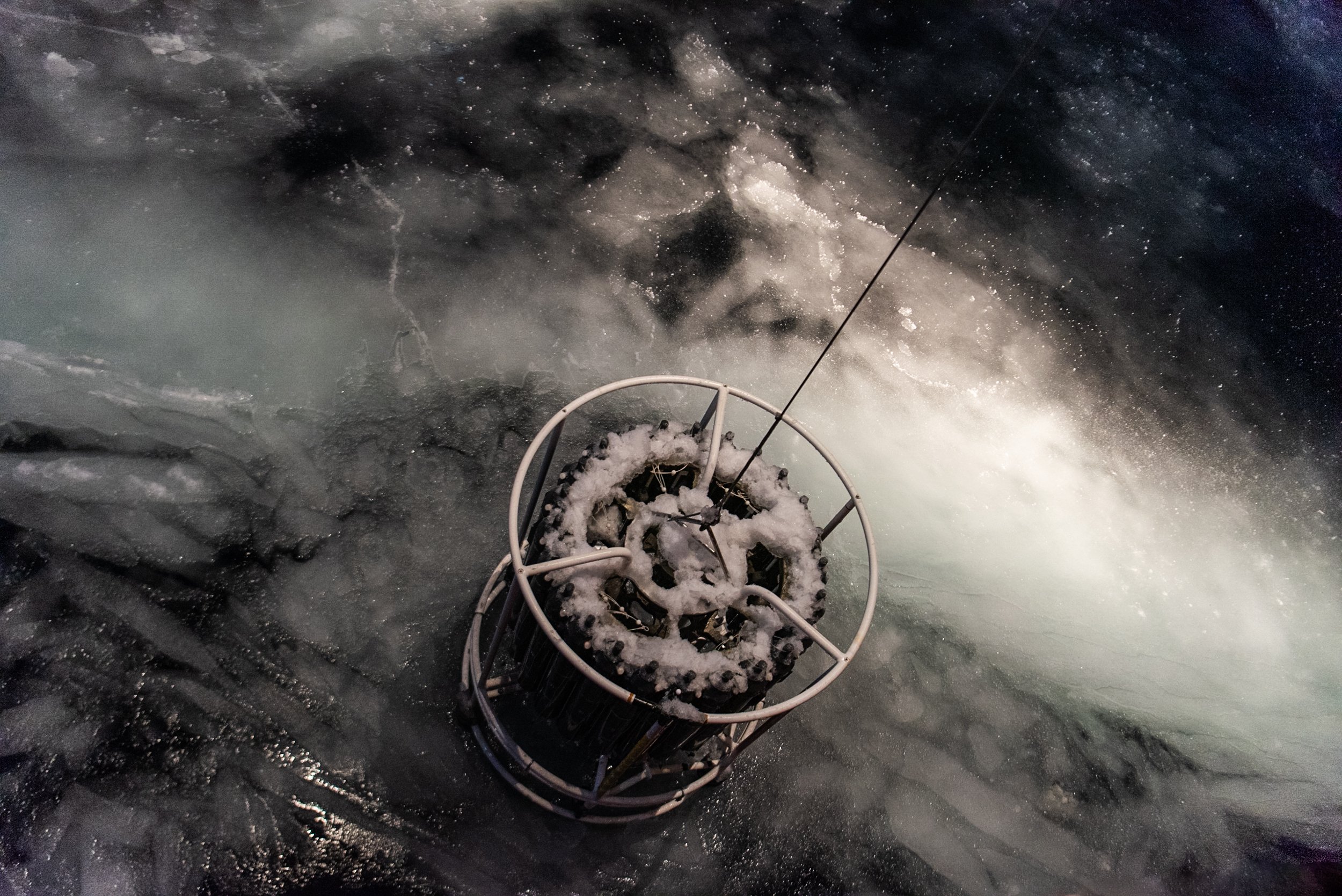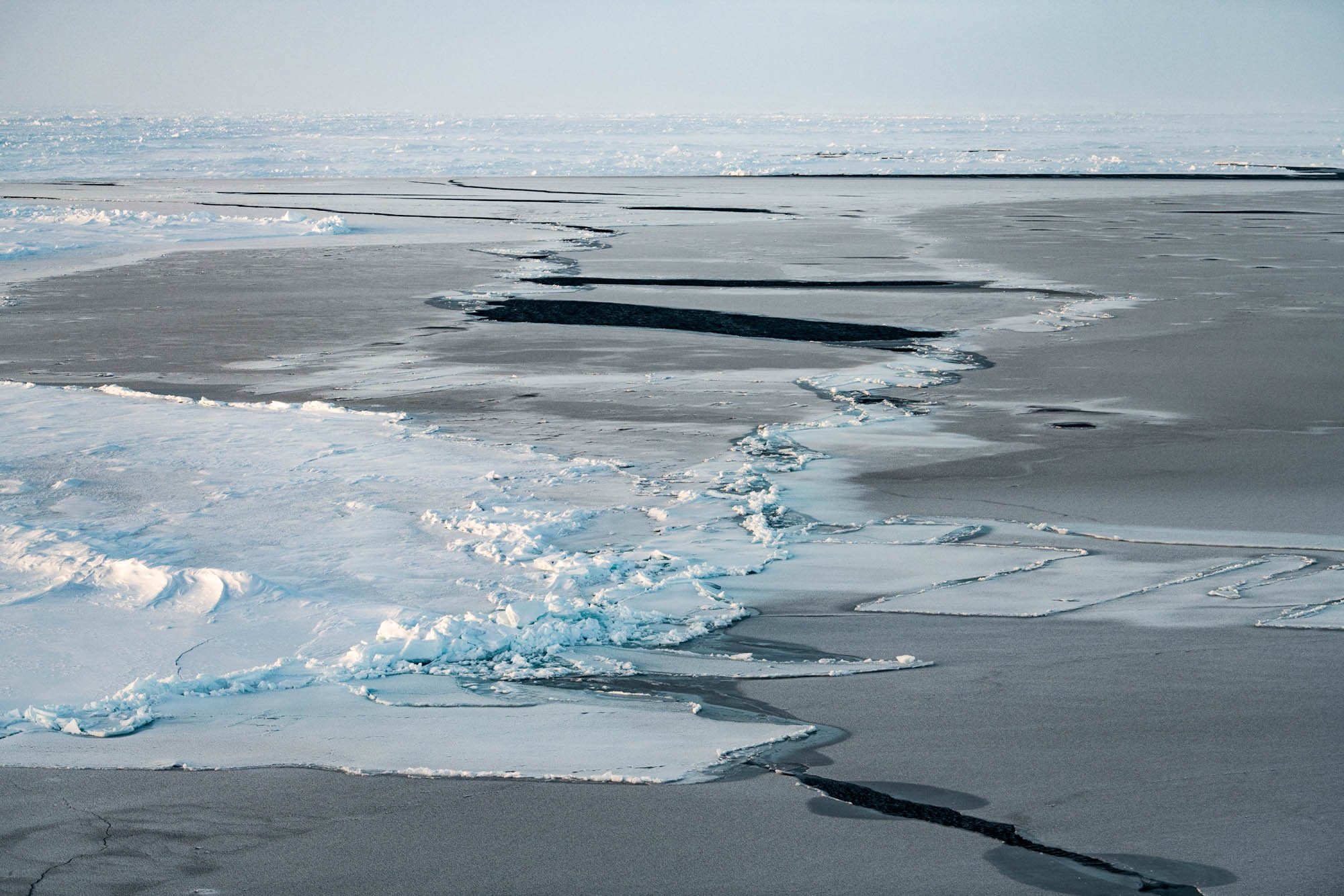October 27th
I left Dutch Harbor on Thursday, October 27th. Getting out of Dutch Harbor was “interesting.” As there had been storms the previous days and all flights were cancelled, when I called the airline in the morning about flying out, they said that there was no way that I’d get on a flight that day. So, I left the Healy to sleep off the ship for the first time in 54 days and checked into the Grand Aleutian hotel. When I went downstairs, one of the scientists was talking about trying to get out that afternoon. I decided to call the airline and when they answered, they said that they had just called my name and they told me to get to the airport right away. I was at the airport in 10 minutes and on my way to Anchorage about an hour later, landing there a few hours later that evening.
Plane landing on the short runway at DUT (Dutch Harbor)
At Anchorage airport, I booked a new flight to NYC and at 5:10 am the next morning, I was on my way to Seattle, and then onto Newark where I landed early Friday evening. One of my sons picked me up, we went out to dinner with two of my grandchildren, and then my son brought me home. It had been a long couple of days.
November 3rd
It’s now a week since I left the Healy and Dutch Harbor. It’s still somewhat disorienting to be off the ship back on land, in Brooklyn, and away from the unending whiteness of the ice even though it was left behind on October 15th. Getting back to “normal” life is complicated even though it was great to see family and friends.
So now, some brief reflections about the trip.
When I got on to the Healy, I had no idea what I was getting myself into. Though I had previously been on six trips to the Arctic including five on boats, none were longer than three weeks. And on all of them, there were frequent zodiac cruises and shore landings. Apart from two hours of “ice liberty” at the North Pole, I hadn’t been off the ship for 52 days. I had never been on ship with a large group of scientists, seen their working conditions or kind of work that they do, nor had I ever been on a military ship.
The Healy at the North Pole, October 2, 2022
Healy crew using poles to break up thin ice before retrieving the CTD
The CTD coming up through the ice
So, what was it like/how did I do? I think that anyone who has been following my blog knows that I loved it. I can’t think of any time when I wished that I wasn’t on the boat though I knew that, during our last days on open water before we got back to Dutch Harbor, I would be ready to get off the Healy. I think that this was the case with most everyone on the ship
I had two roommates in our small berth. We got along well and there never the slightest disagreement or discord. I don’t think that I ever kept my roommates awake or was awakened by either of them. Overall, on the ship, I think that everyone respected each other and the work that went on. That includes the scientists, tech people, officers, and the crew. That’s impressive for a large group of people on a long trip with no means of egress. I believe that this happened because almost everyone on the ship was there because they wanted to be there.
Personally, though there were days with less to photograph, I found that the time went by very quickly. Whether I was photographing, working on my new images, writing, eating, or even hanging out, suddenly, it was bedtime. I certainly was never bored!
When I got on, I thought that the most interesting time photographically would be as we entered and exited the new ice as the multi-year pack ice would be somewhat uniform and hence, less interesting. That wasn’t at all the case. As we got further north, there were frequent leads of open water, with new ice formations. It made it easier for the ship to move through the ice and it was great for my photography. There should have been fewer leads and less open water as we moved north.
However, environmentally, it was highly problematic and evidence for the major effects of climate change on the Arctic ice and ocean. The scientific work being carried out on the Healy will give us greater understanding of the Arctic and the rapid changes going on there.
In the end, it will take time to fully process my experience on the Healy and in the vastness of the Arctic ice. without a doubt, it was one of the most amazing and wonderful experiences of my life.
Pancake Ice next to a lead
Not the End
As I process my photographs and my thoughts, I will make additional posts to this blog and/or to a new Arctic webpage on my site.


























































































